Often overlooked, brussel sprouts are a powerhouse of nutrition, packed with vitamins K and C, high in fiber, and rich in antioxidants. They’re not just a side dish for your holiday meals, but a worthy addition to your garden and your diet. This guide will take you through the entire growing season of brussel sprouts, providing you with all the knowledge you need to successfully cultivate this nutritious vegetable in your own backyard.
Brussel sprout growing stages: It begins with germination, followed by the seedling stage where leaves and a stem develop. The vegetative stage sees further growth, followed by flowering and budding stages where sprouts form. In the maturity stage, sprouts continue to grow and mature. Finally, sprouts of about 1 inch in diameter are harvested. The timing of these stages can vary based on factors like temperature, growing conditions, and the specific Brussels sprouts variety.
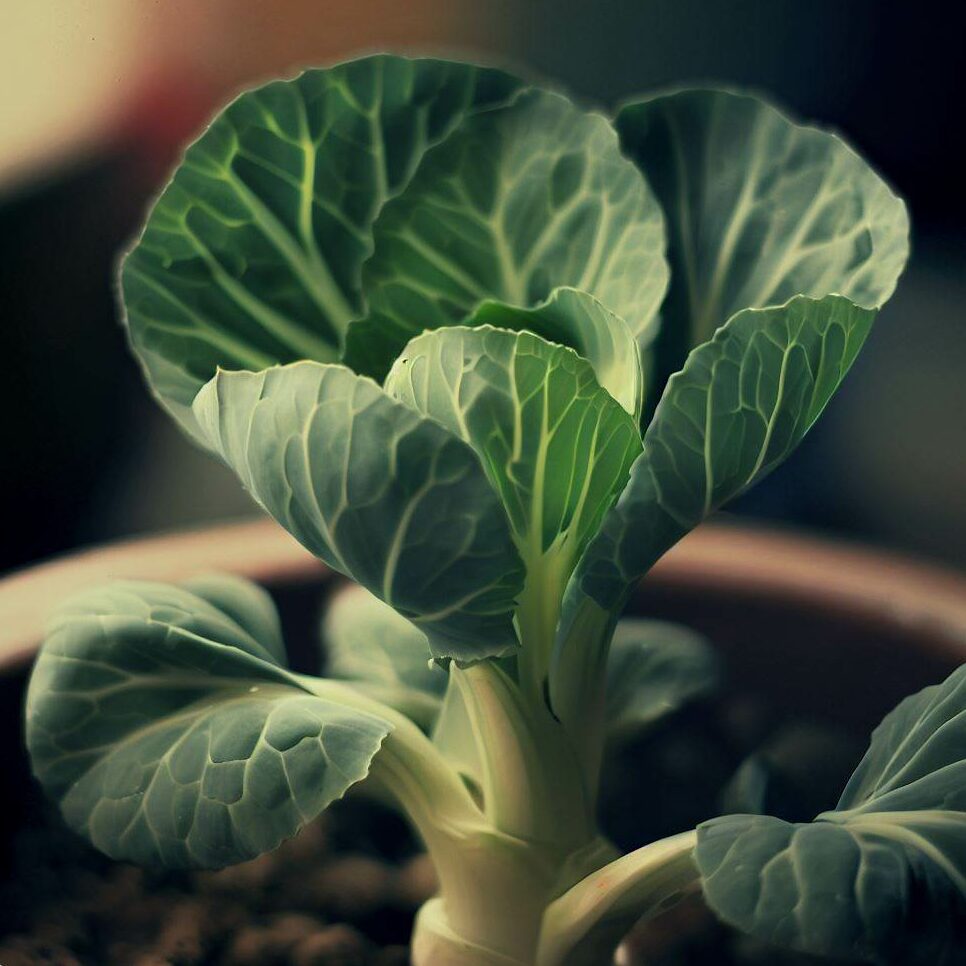
🌱 Brussel Bits: Brussel sprouts are named after the capital of Belgium, where they have been grown for over 400 years. 🌱
In this article, we’ll delve into the fascinating world of brussel sprouts and their growth stages. We’ll start with the germination stage, where the magic begins with a tiny seed, and journey through to the harvesting stage, where you’ll reap the fruits (or rather, sprouts) of your labor.
🌱 Brussel Bits: Growing brussel sprouts can be a fun and rewarding experience. It’s not just about the end result, but the process itself. So, let’s get started! 🌱
The Germination Stage
Every great journey begins with a single step, and for brussel sprouts, that step is germination. This is the stage where the seed begins to sprout, marking the start of a new life.
Understanding Germination
Germination is the process by which a plant grows from a seed. It’s a crucial stage in the life cycle of brussel sprouts, as it sets the foundation for the growth that’s to come. The seed, which contains the embryo of the brussel sprout plant, absorbs water and begins to swell. As the seed coat softens and splits, the embryonic root emerges and starts to grow downwards. The embryonic shoot then pushes upwards towards the light, and the first leaves begin to unfold.
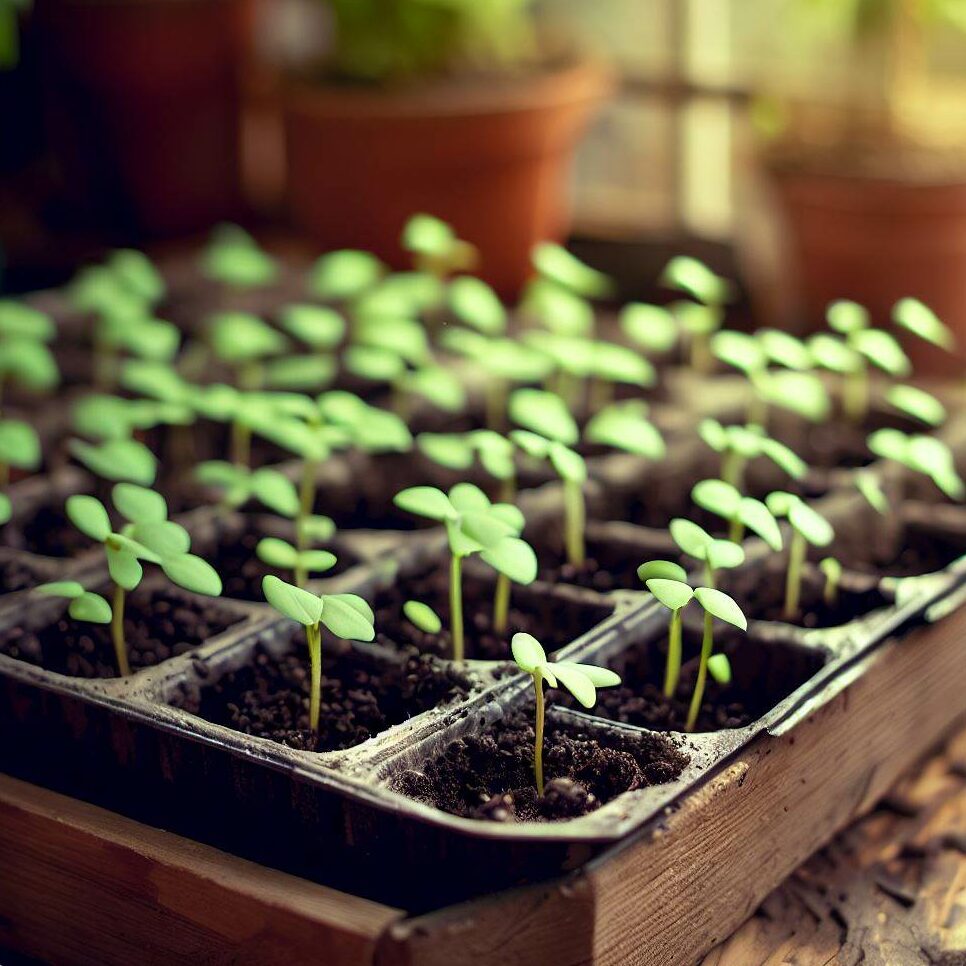
Ideal Conditions for Germination
For successful germination, brussel sprouts seeds need the right conditions:
- Temperature: The ideal soil temperature for germination is between 45-85°F (7-30°C).
- Moisture: The soil should be consistently moist, but not waterlogged.
- Light: While brussel sprouts seeds can germinate in both light and dark conditions, they generally prefer a bit of light.
🌱 Brussel Bits: Using a seed tray with a clear plastic lid can help maintain the right temperature and moisture levels for germination. 🌱
How to Grow Brussel Sprouts from Seeds
Starting brussel sprouts from seeds is a rewarding process. Here’s a simple step-by-step guide:
- Fill a seed tray or pots with a good quality seed compost.
- Sow the seeds about 1/2 inch deep and cover lightly with compost.
- Water the seeds gently to ensure the compost is moist.
- Place the tray in a warm, light place but out of direct sunlight.
- Keep the compost moist until the seeds germinate.
Do Brussel Sprouts Grow Slowly?
Brussel sprouts do have a reputation for being slow growers. The seeds will sprout in 5-10 days under ideal conditions, but the plants take their time to mature. From sowing to harvest, brussel sprouts can take anywhere from 80 to 130 days. But remember, good things come to those who wait!
The Seedling Stage
After the excitement of germination, we move on to the seedling stage. This is when the young brussel sprouts plant starts to develop its first true leaves and begins to look like a mini version of the mature plant.
Understanding the Seedling Stage
During the seedling stage, the plant focuses on growing more leaves and strengthening its stem. It’s a critical time in the plant’s life as it’s establishing the foundation for future growth. The seedling will continue to grow and develop until it’s ready to be transplanted into a larger pot or the garden.
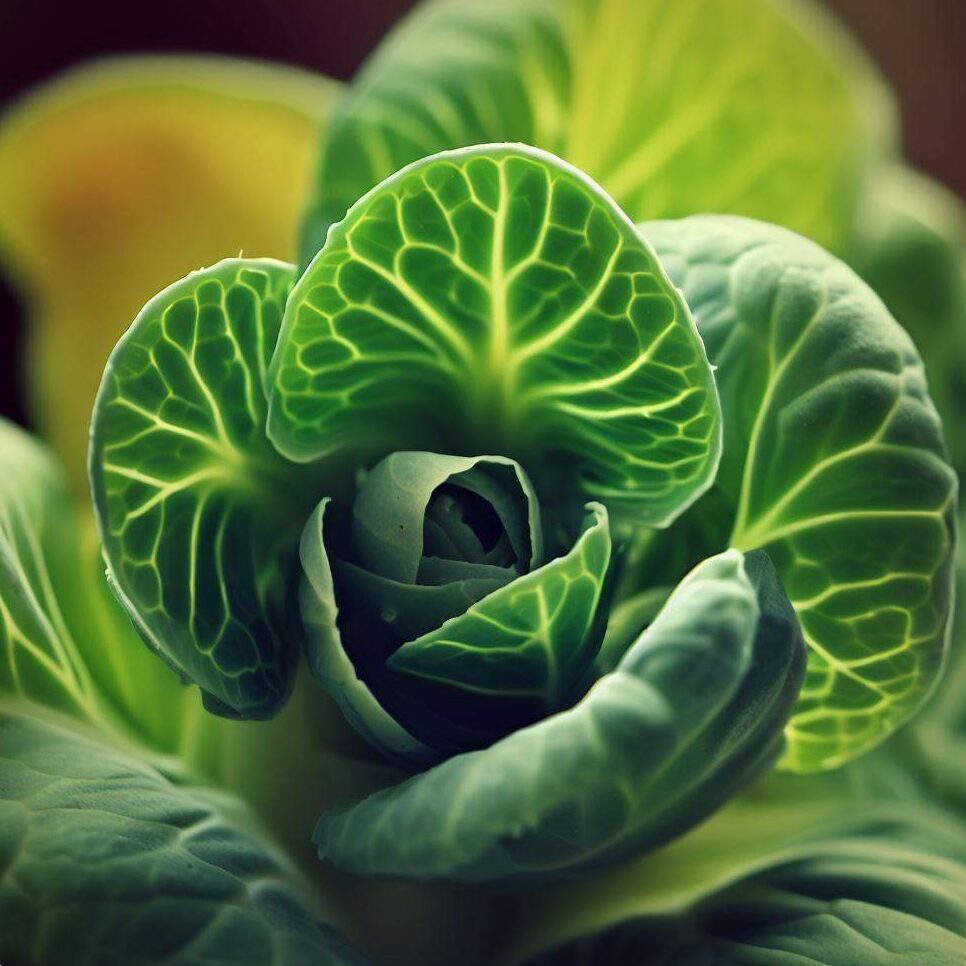
Care Tips for Brussel Sprouts Seedlings
Here are some tips to help your brussel sprouts seedlings thrive:
- Keep the soil consistently moist but avoid overwatering.
- Provide plenty of light, but protect the seedlings from direct, harsh sunlight.
- Ensure the seedlings are in a location with good air circulation to prevent fungal diseases.
🌱 Brussel Bits: If you’re growing brussel sprouts indoors, consider using a grow light to ensure the seedlings get enough light. 🌱
How to Grow Brussel Sprouts in Pots
Brussel sprouts can be successfully grown in pots, making them a great option for those with limited garden space. Choose a deep pot to accommodate the brussel sprouts’ extensive root system, and use a high-quality potting mix. Ensure the pot has good drainage to prevent waterlogging. Place the pot in a sunny location and keep the soil consistently moist. With the right care, you’ll have homegrown brussel sprouts in no time!
The Vegetative Stage
After successfully navigating the seedling stage, our brussel sprouts enter the vegetative stage. This is a period of rapid growth where the plant focuses on developing its leaves and stem.
Understanding the Vegetative Stage
In the vegetative stage, the brussel sprouts plant is working hard to gather as much sunlight as possible. The more leaves it has, the more sunlight it can absorb, and the more energy it can produce for growth. It’s a time of preparation as the plant builds up the resources it will need for the next stage: flowering and sprout production.
Caring for Brussel Sprouts During the Vegetative Stage
Here are some tips to help your brussel sprouts thrive during the vegetative stage:
- Water regularly to keep the soil consistently moist.
- Feed with a balanced vegetable fertilizer to provide necessary nutrients.
- Keep an eye out for pests and diseases, and treat as necessary.
🌱 Brussel Bits: Brussel sprouts are a cool-season crop and can tolerate frost, but they need protection from extreme cold. Consider using row covers if frost is forecasted. 🌱
Ideal Growing Conditions for Brussel Sprouts
Brussel sprouts prefer cool temperatures, with the ideal range being 45-75°F (7-24°C). They need full sun to partial shade and well-drained soil rich in organic matter. A soil pH of 6.0-7.5 is ideal. Regular watering is essential, but avoid waterlogged conditions as this can lead to root rot. With the right conditions, your brussel sprouts will grow strong and healthy, ready for the next stage of development.
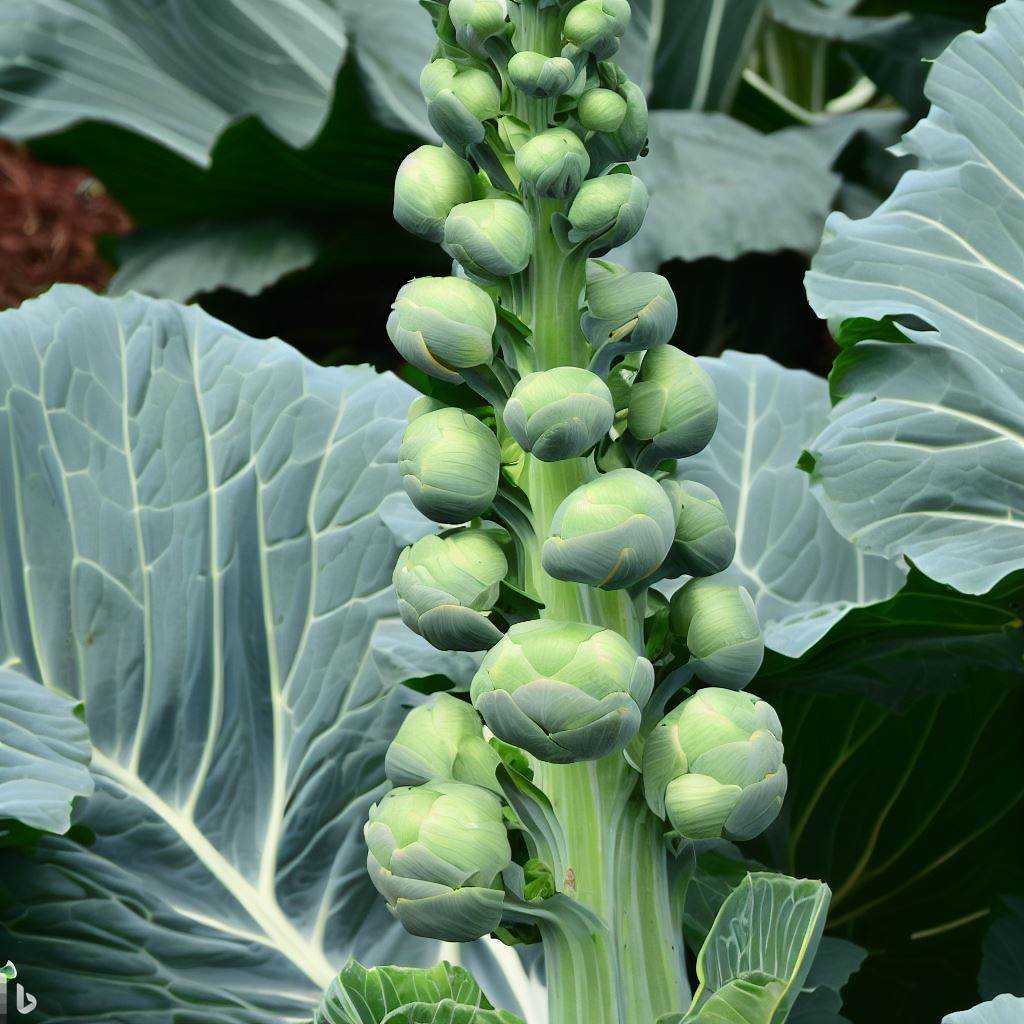
Flowering and Budding Stage
As our brussel sprouts journey continues, they enter the exciting flowering and budding stages. This is when the magic happens, and those delicious sprouts begin to form.
Understanding the Flowering and Budding Stages
During the flowering stage, the brussel sprouts plant produces small yellow flowers. These flowers are soon followed by the budding stage, where the familiar sprouts start to form along the stem of the plant. Each sprout is essentially a tiny cabbage, packed with flavor and nutrients.
How to Make Brussel Sprouts Grow Bigger
Want bigger sprouts? Here are some tips:
- Ensure your plants are getting enough sunlight. Full sun to partial shade is ideal.
- Keep the soil consistently moist. Regular watering is key.
- Feed your plants with a balanced vegetable fertilizer.
🌱 Brussel Bits: Pinching out the top of the plant can help to divert more energy to the sprouts, helping them to grow bigger. 🌱
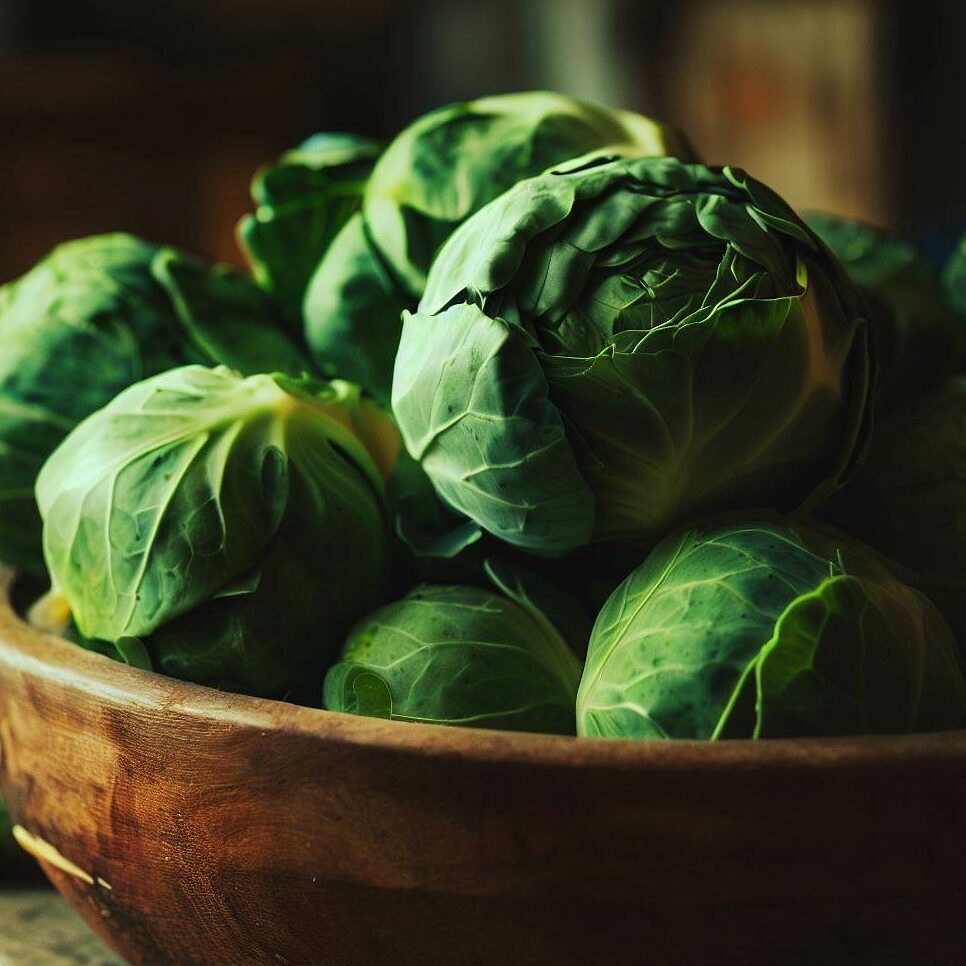
Common Pests and Diseases
Brussel sprouts can be affected by a variety of pests and diseases, including cabbage worms, aphids, and clubroot. Regular monitoring and early intervention can help to keep these problems in check. Use organic pest control methods where possible to keep your sprouts safe and healthy.
Maturity and Harvesting Stage
The final stages of our brussel sprouts’ journey are the maturity and harvesting stages. This is when you get to reap the fruits (or rather, sprouts) of your labor.
Understanding the Maturity Stage
During the maturity stage, the sprouts continue to grow and develop until they reach about 1 inch in diameter. This is typically when they are at their most flavorful and nutritious.
Harvesting Your Brussel Sprouts
Harvesting brussel sprouts is a rewarding experience. To harvest, simply twist the sprouts off the stem. Start from the bottom of the plant and work your way up, as the lower sprouts mature first.
🌱 Brussel Bits: A light frost can actually improve the flavor of your sprouts, so don’t rush to harvest them all at once! 🌱
How Long Does It Take to Grow Brussels Sprouts?
From planting to harvest, brussels sprouts typically take around 26 to 31 weeks to grow. This can vary depending on the specific variety and growing conditions. Patience is key when growing brussels sprouts, but the wait is definitely worth it!
Post-Harvest Care and Yearly Growth
After harvesting your brussel sprouts, there are a few steps you can take to ensure the health of your plants for the next growing season.
Post-Harvest Care for Brussel Sprouts
After harvesting, remove any remaining leaves and sprouts from the plant. This helps to prevent disease and pest infestations. If you plan to compost your plants, make sure they are disease-free to avoid contaminating your compost pile.
Do Brussel Sprouts Come Back Every Year?
Brussel sprouts are typically grown as annuals, which means they complete their life cycle in one growing season. However, if you leave some sprouts on the plant, they can potentially sprout again the following year.
Can You Grow Brussel Sprouts Inside?
While it’s possible to grow brussel sprouts indoors, they tend to do best outdoors where they can get plenty of sunlight. If you do decide to grow them indoors, make sure they have a sunny spot and plenty of room to grow.
🌱 Brussel Bits: Indoor brussel sprouts need at least 6 hours of sunlight a day, so a south-facing window is ideal! 🌱
Common Problems in Growing Brussel Sprouts
Despite your best efforts, you may encounter a few challenges when growing brussel sprouts. Here are some common problems and how to prevent and solve them.
Brussel Sprouts Growing Problems
Some common issues include pests like aphids and cabbage worms, diseases such as clubroot and black rot, and environmental stressors like heat and inadequate watering.
- Aphids and Cabbage Worms: These pests can be controlled with insecticidal soap or by encouraging natural predators like ladybugs and birds in your garden.
- Clubroot and Black Rot: These diseases can be prevented by practicing crop rotation and maintaining a balanced soil pH.
- Heat and Watering: Brussel sprouts prefer cooler temperatures and consistent watering. Mulching can help maintain soil moisture and keep the roots cool.
Tips to Prevent and Solve These Problems
Regular monitoring of your plants can help you spot problems early and take action. Healthy soil, proper watering, and good garden hygiene can prevent many common problems.
🌱 Brussel Bits: If you’re having persistent issues with pests or diseases, consider reaching out to your local extension service. They can provide advice tailored to your specific situation and region. 🌱
Conclusion
In this comprehensive guide, we’ve walked through the stages of brussel sprouts growth, from germination to harvest, and even post-harvest care. We’ve also discussed how to grow brussel sprouts in pots, ideal growing conditions, common problems, and their solutions.
Growing your own brussel sprouts can be a rewarding experience. Not only do you get to enjoy the fruits of your labor, but you also gain a deeper understanding and appreciation for the process. So why wait? Start your brussel sprouts growing journey today!
🌱 Brussel Bits: Remember, patience and care are key in gardening. Happy growing! 🌱
